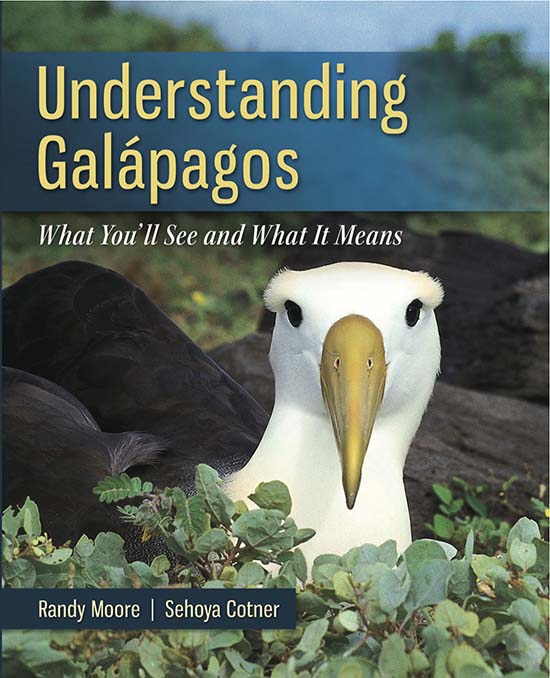The Holbrook Explorer

"Understanding Galápagos": A New Look at an Ancient Place
"Understanding Galápagos": A New Look at an Ancient Place
The courtship ritual of the Blue-footed Booby is a strange sight. The male raises up his bright blue feet, showing them off to the female, in a sort of exaggerated waddle-dance. But why do they do it?
If University of Minnesota professors Randy Moore and Sehoya Cotner have their way, visitors to the Galápagos Islands soon will know the answer. (Females seem to prefer a certain shade of blue that indicates the male’s diet and thus his physical fitness.)
The result of years of research and dozens of trips to the archipelago, “Understanding Galápagos: What You’ll See and What It Means” becomes available February 1.
“We wrote the book that we were looking for when we took our first group of students to Galápagos,” Moore says.
Though the book includes helpful information for planning a trip, Moore and Cotner also wanted to provide a broader context for readers. The book includes a detailed history of the islands and the families that influenced their development, as well as an explanation of the challenges currently facing Galápagos. It also describes the geography, trails, and wildlife a typical visitor may see and uses easy-to-understand language to explain the science behind the sights.
Moore describes most books on the Galápagos as falling into one of two categories: specialty books, such as those focusing on conservation, or traditional natural history texts with checklists and brief descriptions of the islands’ flora and fauna.
“We had used those books and enjoyed them,” he says, “but what no book out there does is explain what people are looking at,” he says.
Another feature of their book is an appendix comprising more than 350 GPS coordinates, helping travelers find locations of interest, including those that are unmarked or easily overlooked.
Says Moore, “We want people to see these things that otherwise they will walk right past.”
Moore himself first visited the Galápagos in the early 1970s. He says the landscape was not what he expected – desert, scruffy brush, volcanic rock – but it had a huge impact on him. “It’s almost a rite of passage for biologists,” he says.
Moore is not alone in his fascination; last year, more than 170,000 people visited the islands. He says it’s easy to criticize tourism and its impact on the islands’ biology, but tourism also helps provide the money needed to fund conservation efforts. He calls himself “cautiously optimistic” about future efforts for preservation, and he indicates the government is getting more serious about implementing protective measures.
Moore and Cotner have taken student groups to the Galápagos since 2008, with plans to lead two more trips in the summer of 2013. When traveling with students, Moore says, “preparation is everything,” and he credits Holbrook Travel with ensuring the trips have gone smoothly. He also points out Holbrook’s use of “exceptionally good” guides, which he says can make or break an entire trip.
“It’s amazing to be with students when they see these things play out right in front of them,” he says. The experience of swimming with sea lions, watching an albatross take off, or observing an iconic, “prehistoric” tortoise five feet across, is life-changing for many students. “It changes how students view nature,” he says.



